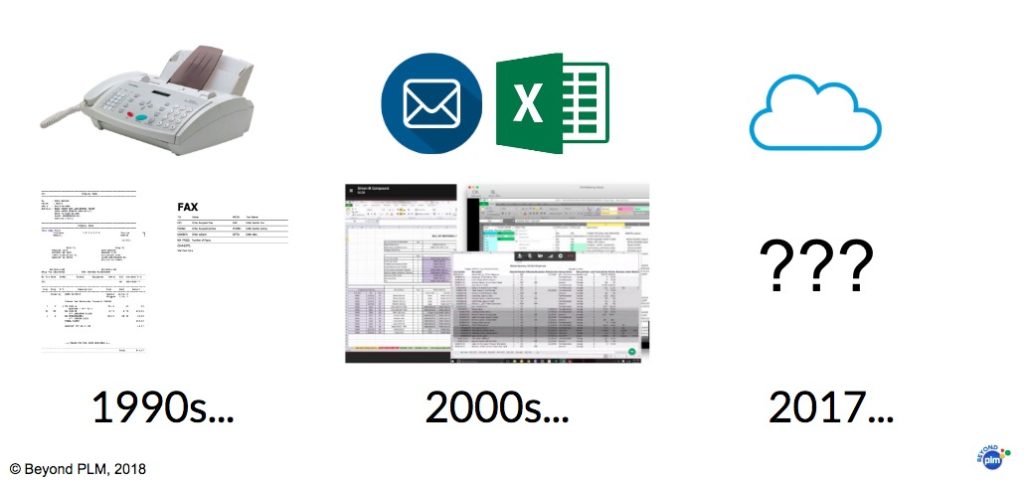
PLM adoption is one of the most intriguing things in engineering and manufacturing software. The ideas of PLM systems are very rational and explains very well why and how company can benefit from introducing of Product Lifecycle Management concepts and software into engineering and product development process. But… even PLM vendors are reporting about great improvement, the adoption of PLM tools is still low.
My attention was caught by The PLM State TBT: Recipe for Success article and PLM adoption was one of the topics covered in the post. Here is a key passage:
The message is simply this: you may not have total control over the design regarding everything in the product. But that doesn’t mean that you don’t have control. If you like what you’re getting, document that too, just like you would as if you did it yourself. Make the Subs/CMs provide you enough of the specification to ensure that they may not deviate on what matters to you without an ECO. You are not telling them what to do – you are telling them what you will pay for. That’s fair enough. They must follow the “recipe”, even if they contribute part of it.
While I’m honestly believe ECOs are very much important, PLM is obsessively concerned about the control. Which reminded me one of stories told by Scott Miller by Dragon Innovation. Dragon is consulting outfit working with manufacturing startups. Here is my earlier article – Spreadsheet vs PLM dilemma to manage BOM. And here is passage I captured:
Scott Miller: “Nothing stops us faster than Windchill. PLM can put us in a dead stop when we are trying to get product out”.
I captured another example if Forbes article earlier today – Manufacturing needs its tech moment by Dave Evans, CEO of Fictiv.
Despite these advancements, today’s hardware teams are still reliant upon a 20-year-old suite of Microsoft Office tools to manage complex workflows. The system of communication and coordination mechanical engineers and manufacturers use to manage projects has developed organically over the past five decades. It exists as a patchwork quilt of inefficient tools like email and file sharing applications. The result is extreme and unnecessary delays and costs from start to finish. For hardware teams that are juggling multiple projects at once, their full potential is never realized. Antiquated processes create barriers that prohibit potentially landmark innovations from ever coming to market because they are simply too involved or too costly to produce.
It made me think about PLM adoption from a different angle. For years, PLM systems have tried to introduce order and control to engineering and manufacturing organization. Structured processes, control over the information. Manufacturing companies adopted PLM, but in a very limited form. For most of these systems, it is safe place to store released information – such an expensive deposit box where you can find data that never going to change in the future. But it has nothing to do with efficiency of processes and speed of communication. This is where I can see of manufacturing tech innovation can come – process and communication enabling tools.
What is my conclusion? In 1990s, manufacturing companies used fax machines to communicate. Email and spreadsheets became a mainstream tools to communicate in 2000s. These days manufacturing companies are still relying on spreadsheets and emails when it comes to communication between engineering and product teams. PLM products are expensive and slow system. Even adopted by engineering departments, most of PLMs are hated outside of engineering as complex, slow and inefficient. The time to bring new tools to communicate between manufacturing is now. Just my thoughts…
Best, Oleg
Want to learn more about PLM? Check out my new PLM Book website.
Disclaimer: I’m co-founder and CEO of OpenBOM developing cloud based bill of materials and inventory management tool for manufacturing companies, hardware startups and supply chain. My opinion can be unintentionally biased.
The post PLM adoption – why manufacturing workflows are still dependent upon old Excels? appeared first on Beyond PLM (Product Lifecycle Management) Blog.




Be the first to post a comment.